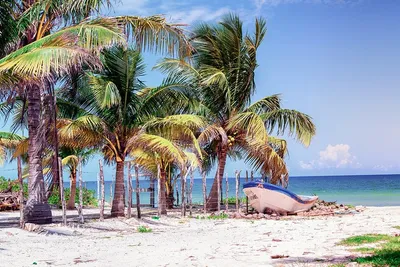
Yucatan’s Coastal Treasures: Unveiling the 10 Best Beaches for 2024
Yucatan’s Coastal Treasures: Unveiling the 10 Best Beaches for 2024
Known for its crystal clear water and white sandy shores, the beaches of Yucatan offer the perfect setting for a relaxing and rejuvenating vacation.
In this post, we will take a closer look at some of the top beaches in the region, highlighting their unique features and offering tips on how to make the most of your visit.
Whether you’re looking for a quiet spot to soak up the sun or a lively beach party scene, Yucatan beaches have something for everyone.
So, grab your sunscreen, and let’s dive in!
What are the virgin beaches in Yucatan?
Yucatan has almost virgin beaches in small towns and fishing villages, with beautiful, clean, and well-preserved sandy beaches, such as:
- Telchac
- Sisal
- Celestun
- Chicxulub
- Progreso
- San Crisanto
- Chelem
- Chuburna
- Dzilam de Bravo
- Las Coloradas
- San Felipe
The states bordering Yucatan, Quintana Roo, and Campeche, also have beautiful beaches close enough to enjoy on a day or weekend.
Three of them, Playa del Carmen, Cancun, and Playa Bonita, are 300 km away.
Yucatecan beaches have everything for maximum pleasure: clear skies, warm waters, and fine sands, ideal for swimming and tanning.
Near these beaches are comfortable accommodations and good restaurants to enjoy a ceviche, a fish tikinxic, or any other delicacy of the typical Yucatecan cuisine.
10 Best Yucatan beaches
1. Playa Progreso and Chicxulub beach (near Merida)

Playa Progreso and Playa Chicxulub are the closest beaches to Merida. They can be reached in just 30 minutes from the Yucatan capital.
Progreso is a coastal city developed in the 19th century when the Sisal dock, Yucatan’s traditional port since colonial times, was no longer sufficient to meet the transportation demands of the henequen industry.
The sandy beach at Progreso, 45 km north of Merida, is wide and comfortable.
On the coast, there is a typical wooden pier and a boardwalk that locals frequent to walk in front of the sea and feel the breeze.
About 8 km from Progreso is Chicxulub, a beach with plenty of entertainment all day long.
Visitors enjoy sunbathing, swimming, and eating in its restaurants in the morning and afternoon. At night, the celebration shifts to nightclubs and bars near the beach.
2. Telchac, Yucatan
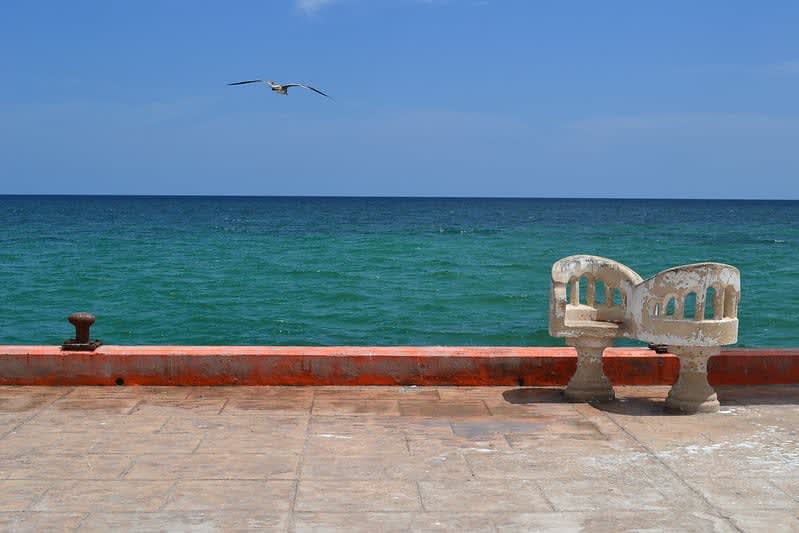
This town and fishing port on the Gulf of Mexico has one of the best beaches in Yucatan, with coconut trees providing shade for swimmers: Coco beach, 10 minutes from Telchac Puerto.
Telchac is 40 km east of Puerto Progreso and 70 km northeast of Merida.
It is called Telchac Puerto to differentiate it from Telchac Pueblo, which is only 16 km south of the coast. In the Mayan language, “Telchah” means “necessary rain.”
The Museo del Mar, the first of its kind in the state, was inaugurated in Telchac Puerto in 2014.
It exhibits various regional marine fauna, including fossils, snails, and starfish.
There is also a photographic exhibit with images of when hurricanes Isidoro and Gilberto passed.
Other tourist attractions in Telchac Puerto include the municipal palace, the main church, the pier, the local park, and the port captaincy building.
3. Sisal beaches in Yucatan

Sisal beach boasts white sand and beautiful dunes with accommodations for all budgets.
After a remodeling, its pier became a place to breathe the marine air and contemplate the beautiful sunsets.
Sisal was the first place in Yucatan where there was a telegraph, installed by the arrival of Empress Carlota of Mexico to its port during her visit to the state in 1865.
Other attractions in Sisal are the port’s old customs house and the swamp mangroves.
Sisal was the principal seaport of Yucatan between the XVI and XIX centuries until the intensification of the henequen industry led to the development of Puerto Progreso.
From its colonial past survives the fort built to defend the port against pirate attacks, which, together with the lighthouse erected in the mid-nineteenth century, is one of the architectural attractions of the town.
4. Celestun, Yucatan
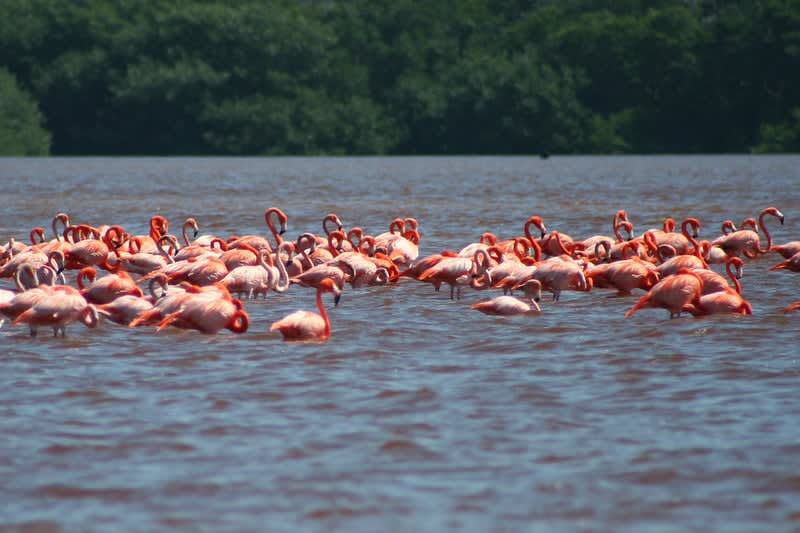
Celestun beach is beautiful, with sand covered with shells and tasty regional cuisine. It is a Yucatecan coastal town on the Gulf of Mexico, 105 km west of Merida.
Parallel to the coast, an estuary that is a biosphere reserve and protected area for being the habitat of the beautiful deep pink flamingos is of great interest to national and international ecotourism.
The estuary’s landscapes are beautiful and home to incredible biodiversity, including nearly 300 bird species, many of which are migratory.
Within the reserve are the Dzinitún Mangroves, a place for wildlife observation, kayaking, and adventure sports.
5. Chelem, Yucatan

Chelem beach has calm waves and warm white sand. Although it is beautiful, it’s not very visited by bathers because it doesn’t have large hotels, making it peaceful.
Chelem is a small fishing village 9 km west of Progreso, which stands out for offering one of the best beaches in Yucatan and for its proximity to the port of Yucalpeten.
Its estuary is a refuge for colorful migratory birds and a place to practice ecotourism activities.
In front of Chelem’s central park is a small market where you can have a tasty breakfast and buy fresh foods to cook at your place.
5 km from the town is the port of Yucalpeten, an important gathering point for the Yucatecan fishing fleet.
6. San Crisanto, Yucatan
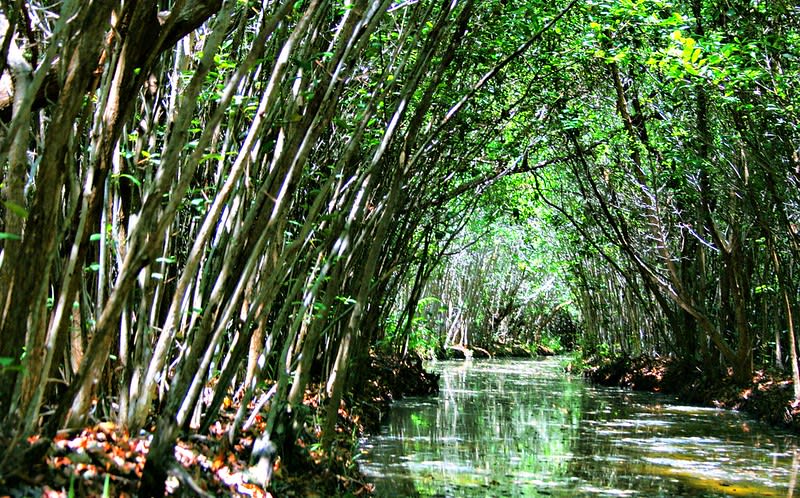
San Crisanto is a small town in the municipality of Sinanche, 78 km northeast of Merida and 52 km east of Progreso.
Its main attractions are its white sand beaches, cenotes, and mangroves, which comprise interesting ecosystems.
The mangrove channels have an extension of more than 1 km and a width of one and a half meters.
They are also shallow, making it possible to appreciate the rich ocean biodiversity with boats driven by the famous “gondoleros.”
There are more than 40 cenotes in the ejido, of which more than 20 have been restored for tourist use.
There is also an active salt mine for the production of salt that can be visited on tour.
During the first week of August, the “Yucatan Venice,” as San Crisanto is known, celebrates the Coconut Festival with a tasting of coconut water-based drinks and food and desserts made from the nut.
7. Chuburna beaches in Yucatan
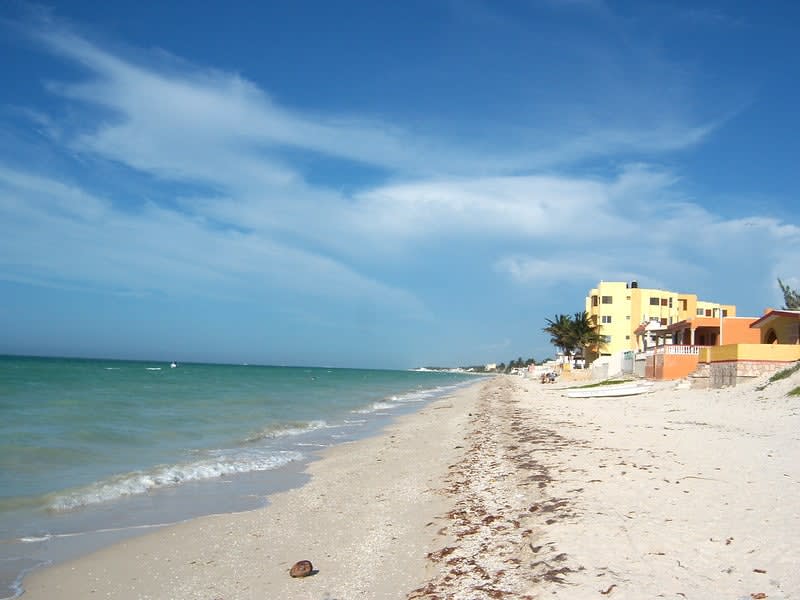
Chuburna is a fishing village of about 2,000 inhabitants located 60 km northwest of Merida and 18 km west of Puerto Progreso Yucatan.
Its beaches are quiet and have plenty of space for everyone, even during Easter and summer, when many hikers and backpackers arrive.
In Chuburna, you can enjoy the warmth of the sea with the healthy sea breeze caressing your face while you try your luck with a fishing rod or a simple hook from the picturesque local pier.
The town’s restaurants prepare simple but delicious seafood, and you can get all kinds of coconut products, from fresh coconut water to creams, cookies, and candies.
Chuburna means in Maya, “place where the houses flood” and is one of the oldest communities in the municipality of Progreso.
8. Dzilam de Bravo, Yucatan
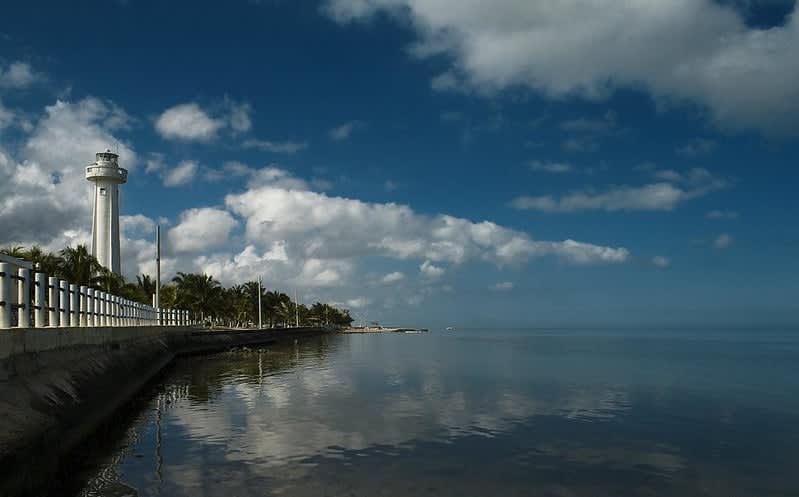
This fishing village is the head of the municipality of Dzilam de Bravo. It is 105 km northeast of Merida, on the Yucatan coast.
Its main attractions are its beaches, where you can also eat delicious seafood, and the Bocas de Dzilam, a protected ecosystem formed mainly by mangroves.
These are a system of “sea arms” whose waters mix with the currents and groundwater near the coast, forming a unique habitat of rich biodiversity.
The Bocas de Dzilam received RAMSAR qualification in 2000 as a wetland of international importance for preserving the environment.
Several Mayan archaeological sites are nearby, such as Xalau, Bolmay, Tamba, Sotpol, and Petul.
9. Las Coloradas and Rio Lagartos, Yucatan
Las Coloradas is a coastal Yucatecan destination in the Rio Lagartos Natural Park, 248 km from Merida and 124 km from Valladolid.
It is named after its impressive pink waters, resulting from the high salt concentration and plankton in this habitat.
The saltworks in Las Coloradas has facilitated this environment with their production process, and it is possible to see the mountains of salt destined for industrial processing.
The sunsets at Las Coloradas are splendid, as the lagoon’s pink color matches the tones of the evening.
The Rio Lagartos Natural Park is a beautiful ecosystem of almost 13,000 hectares of extension, frequented by many tourists who admire the concentrations and flocks of Mexican flamingos, birds of dazzling pink color.
10. San Felipe, Yucatan
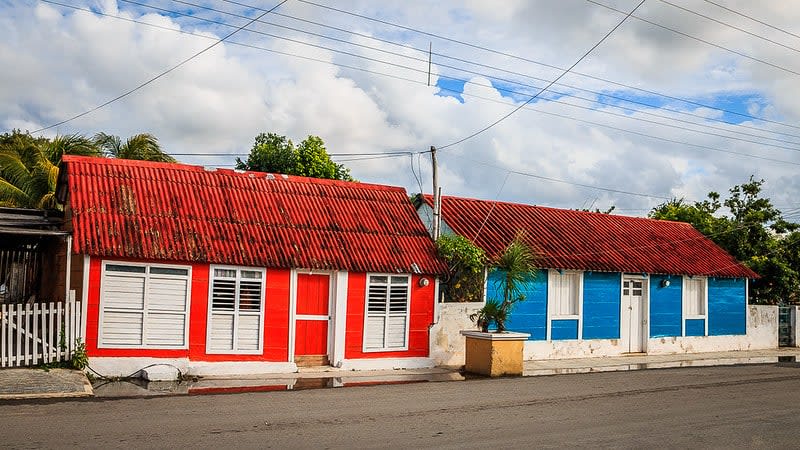
The sea sustains the inhabitants of San Felipe, near Las Coloradas, and offers its visitors another of the best beaches in Yucatan.
San Felipe is almost 200 km northeast of Merida and 114 km from Valladolid in the north.
The town’s simple, brightly colored wooden houses portray the simplicity and humility of its inhabitants.
It is said that a group of indigenous fishermen got lost on the Yucatan coast and landed where the songs of “chuleb,” a native bird, greeted them at the beginning of the XIX century.
They decided to settle in the place and named it Actam Chuleb, which means, in the Mayan language, “in front of the chuleb.”
In 1853 the village was renamed San Felipe de Jesús, and since its foundation, it has lived from fishing and the fertile lands nearby.
Recently a tourist stream has developed thanks to its peaceful beach and the nearby beauties, especially Rio Lagartos.
Is Playa del Carmen close to Yucatan?
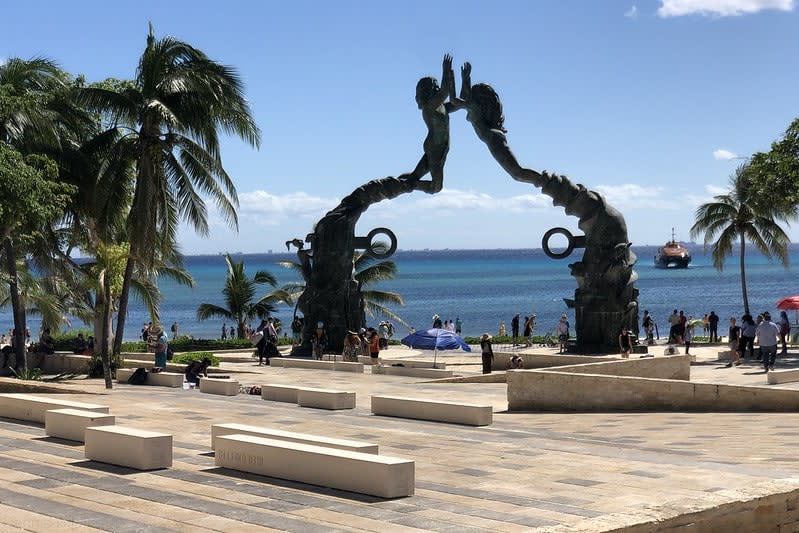
Yes, the Quintana Roo city of Playa del Carmen, in the luminous Mexican Caribbean, is 140 km from Valladolid and 288 km from Merida, traveling east.
Playa del Carmen is a Riviera Maya city with magnificent stores and restaurants on its cosmopolitan Quinta Avenida (Fifth Avenue).
Its beaches, hotels, parks, and other tourist services are equivalent in quality to Cancun’s.
Just 5 km from Playa del Carmen are Xcaret and Xplor, two spectacular natural parks.
The first is an ecological park that houses symbolic species of the regional fauna, such as the manatee and the spider monkey.
It was a crucial Mayan port where ruins of that legendary past are still preserved.
Xplor is a park with caves, caverns, and cenotes, where you can dive, go canoeing, hire canopy tours, and zip lines. You can also practice other adventurous entertainments.
Is Playa Bonita Campeche close to Yucatan?
Yes, Playa Bonita is a famous Campeche sandy beach 185 km southwest of Merida, Yucatan.
It is the closest beach to San Francisco de Campeche, and its fine sand and gentle waves make it perfect for swimming, sunbathing, and water sports.
The beach is 8 km from Campeche capital, near the coastal town of Lerma, and has palapas and a restaurant.
On weekends it tends to be full of locals. To get there from the city, take the “Lerma Tecnológico” bus that passes near the beach.
At Playa Bonita, you can taste a “pan de cazón” (dogfish bread), pickled pompano, coconut shrimp, and other delicacies of Campeche’s seafood cuisine.
If you haven’t already done so, I hope you can travel to Yucatan to enjoy its enchanting beaches and nearby ecosystems, full of life and color. Vamonos!